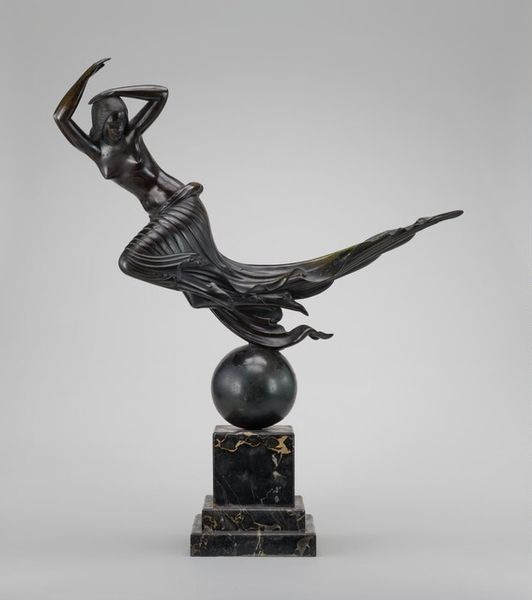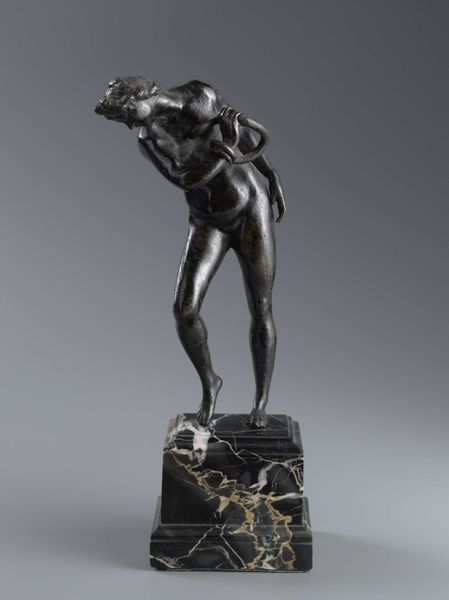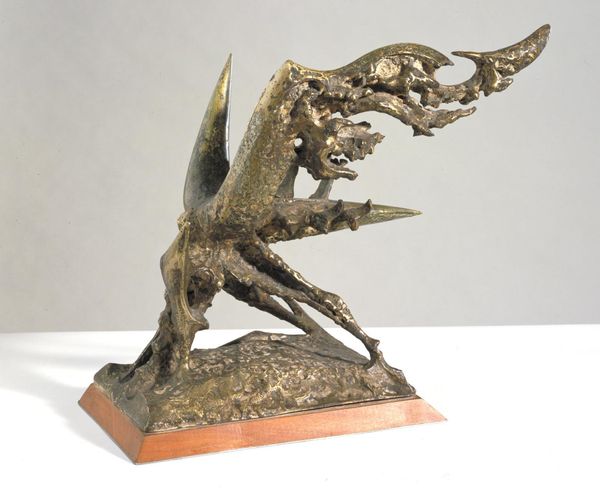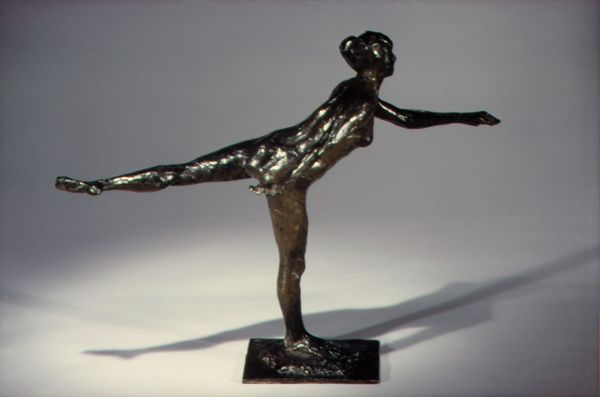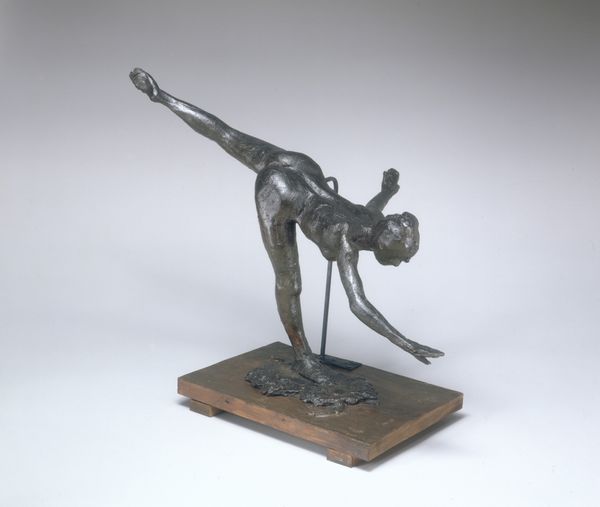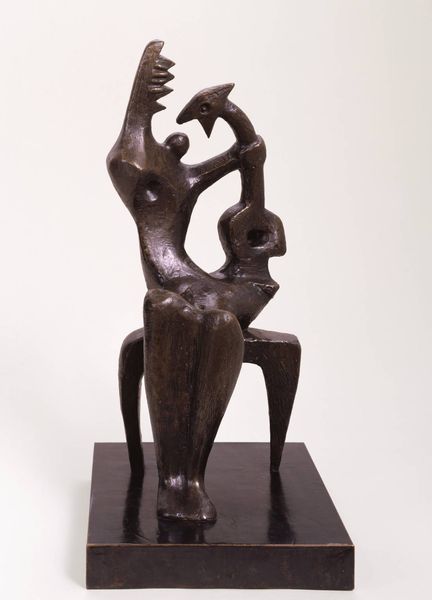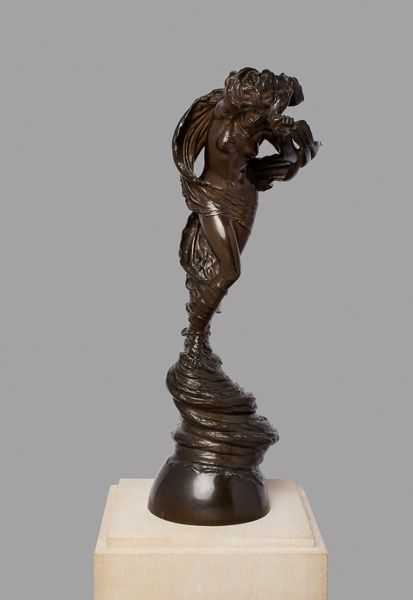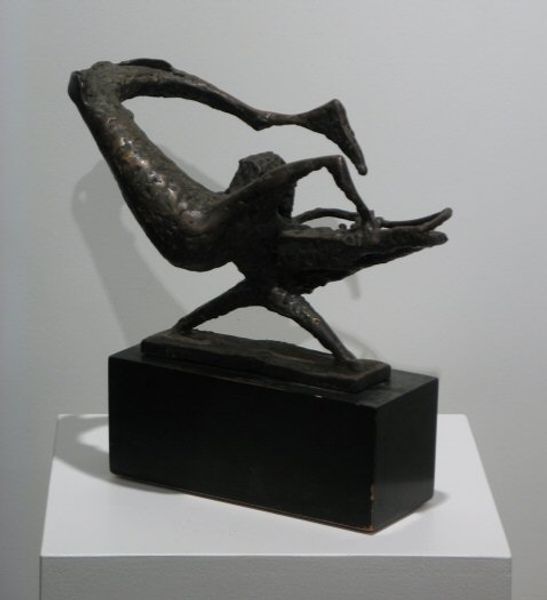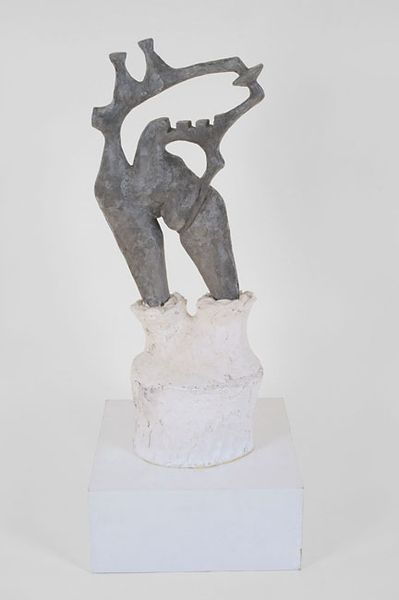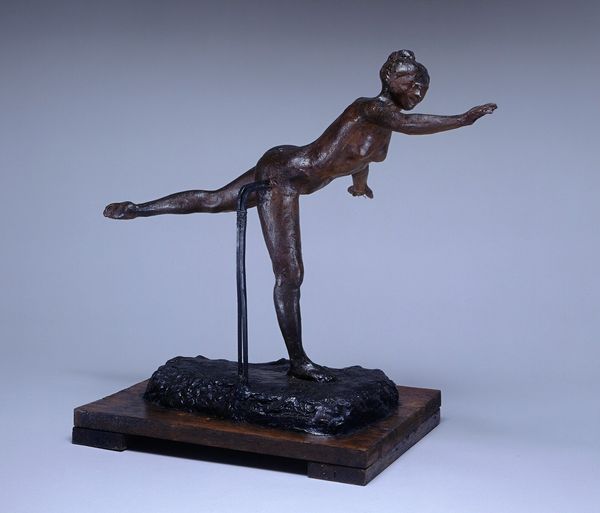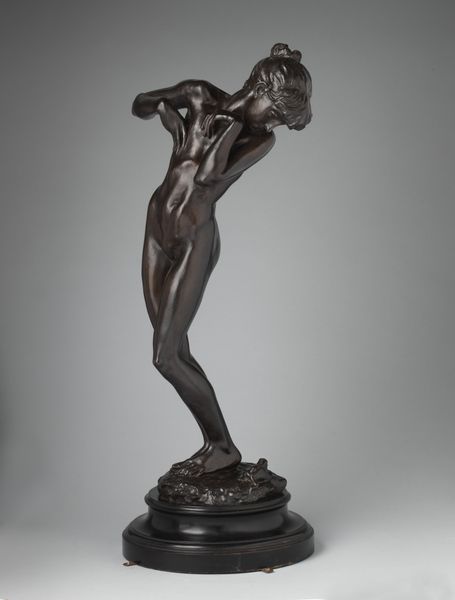
bronze, sculpture, marble
#
art-deco
#
sculpture
#
bronze
#
figuration
#
sculpture
#
marble
#
nude
Dimensions: 25 1/2 x 31 1/4 in. (64.8 x 79.4 cm)
Copyright: No Known Copyright
Curator: This sculpture, “Flight of Night,” was created by Paul Manship in 1916. You can find it here at the Minneapolis Institute of Art. It's rendered in bronze and marble, an elegant synthesis, don't you think? Editor: Absolutely! It evokes such a feeling of dynamic movement. The way the figure is captured mid-leap, balanced precariously on that orb, creates a palpable sense of anticipation. Curator: Manship employed the lost-wax casting method to create this, which was prevalent during the Art Deco movement. The process involves creating a wax model, investing it in plaster, melting out the wax, and then pouring molten bronze into the resulting cavity. Consider the craftsman's skill to manage such complex work! Editor: Speaking of Art Deco, it is interesting to view this sculpture against the backdrop of the early 20th century, with its embrace of industrial progress. Manship blends that modern sensibility with classical forms and mythology, something of a dialogue between progress and tradition. Curator: The bronze’s rich patina gives the sculpture a depth and almost weighty feel, juxtaposed with the perceived lightness of the pose. And then, grounding it, the tiered marble base is essential—linking this ethereal flight with earthy materiality. How do you perceive its impact on the viewer, from an institutional point of view? Editor: "Flight of Night," from an exhibition perspective, prompts a study of allegorical public sculpture during times of social upheaval. How do themes like freedom and escape, embodied in this figure, speak to an audience grappling with global events, as they did during and after the first World War? The figure seems simultaneously weighted down by that beautiful cascading skirt and liberated, right? Curator: Precisely! The weight of the medium and the weight of history converge here. Manship’s technical mastery allows these ideas to become truly palpable, giving physical presence to something otherwise intangible. Editor: It shows that even within controlled environments, the symbolic flight—be it physical, emotional, or intellectual—can ignite a spirit of resilience. Looking at it this way invites a deeper engagement with art's power to resonate across different eras. Curator: Yes, and appreciating how artists wrestle with their materials under particular historical conditions brings its own perspective, too.
Comments
Join the conversation
Join millions of artists and users on Artera today and experience the ultimate creative platform.

